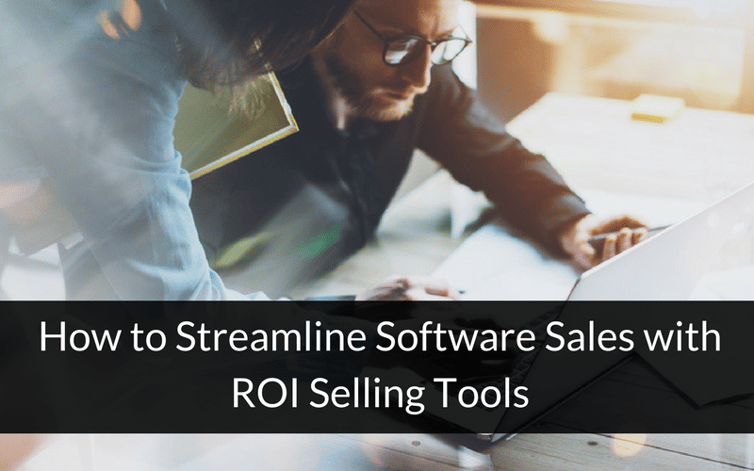
Selling software solutions isn’t as easy as it once was. Between the economic uncertainty and the increasing sophistication of buyers, you’ll need to work harder to convince companies that your solution is the right one for them.
Another change in the sales arena is new buying habits, often referred to in marketing speak as the “buyer’s journey”. Most if not all buyers perform advance research online, and only begin to speak with a sales representative towards the end of the sales cycle when they are nearly ready to make a decision.
This means that when the time comes, not only must you be able to justify your price, but you also need to be able to show value. You can no longer expect to slide in to win a sale merely with the strength of a flashy presentation and a ready-made proposal.
You’re now expected to justify the sale by showing the expected return on investment to a wide array of stakeholders, especially the CFO and finance team, and you must ensure that they all believe in your numbers.
Software Is a Complex Sale
Software can be disruptive and expensive; two attributes that can often make it a hard sell. Software providers and vendors must find ways to prove how their products will improve business performance and increase savings or revenue.
For software, proving ROI is the most important selling point, although the total cost of ownership comes in a close second. However, many prospects and software salespeople find it difficult to determine the investment return, partially because they don’t or can’t calculate the cost of doing nothing.
The seller may not even believe the software does show a return on investment. The cost of doing nothing (aka sticking with the status quo) can be a powerful motivator to make a change. It’s not as difficult to calculate as one might think. Just start asking a few questions such as:
- How much time is wasted on…
- How much money is spent on...
- How many customers do we lose to...
For those reasons, it’s up to you and your sales team to collectively demonstrate the ROI of your solution. If you don’t, the prospect will continue to do business as usual. In other words, they’ll continue with the old standby and do nothing. That’s why you have to find a way to show how much money is being lost on a daily, monthly, or annual basis.
Sales Tools for Selling Software
Your best way forward is to build a business case using the buyer’s own data. Value selling tools can streamline the process; saving your sales and marketing team time. Sales tools such as an ROI tool improve efficiency and productivity for your sales reps, allowing them to generate more highly qualified sales opportunities and close more sales in less time.
To generate qualified leads, an online assessment tool and value calculator can encourage prospects to enter their own data to receive a report defining the scope and magnitude of their current problem, and an accurate estimate of the value your solution would bring were they to implement it.
Click here for an example of value calculator used by a software company.
Once you have acquired that data, your sales team can use it to calculate the return on investment the prospect can expect when using your solution. The calculation is made simple with an ROI tool that your sales rep can use while preparing to meet with the prospect or even while presenting to the prospect on the fly.
Because the data used for the calculation is proprietary to that prospect, the business case and ROI are more convincing because the prospect owns those numbers. You aren’t presenting a general case using generic industry numbers.
Building a Business Case Using ROI Selling Tools
A software solution sale usually benefits the most from developing a business case, because these types of sales are typically more complex than others. Proving the value of the product or service is not as straightforward and requires a deep understanding of the customer's business operations and financials.
You know you need a business case when:
- The amount of disruption introduced by your offering is high
- The amount of investment required by your offering is high
How much change will your solution require in operations in terms of people, processes, and technology? If the disruption and required investment are low, as when replacing an existing system with a similar system, you may not need to build a business case. If it’ll be a situation of replacing like with like; no value may be added.
However, if the disruption or required investment is high, all stakeholders will demand justification before making the potential operational changes and taking the financial risk.
Conclusion
Selling software solutions is hard. Make it easier for your sales team to generate and qualify leads and calculate ROI by making it easy for them to build a business case.
Assessment tools and value calculators offered on your website, social media pages, and via email allow prospective customers to qualify themselves. An ROI tool lets your sales team quickly calculate the return on investment to share with the customer and use in building a business case. And a good business case can get you the rest of the way to closing the sale.









